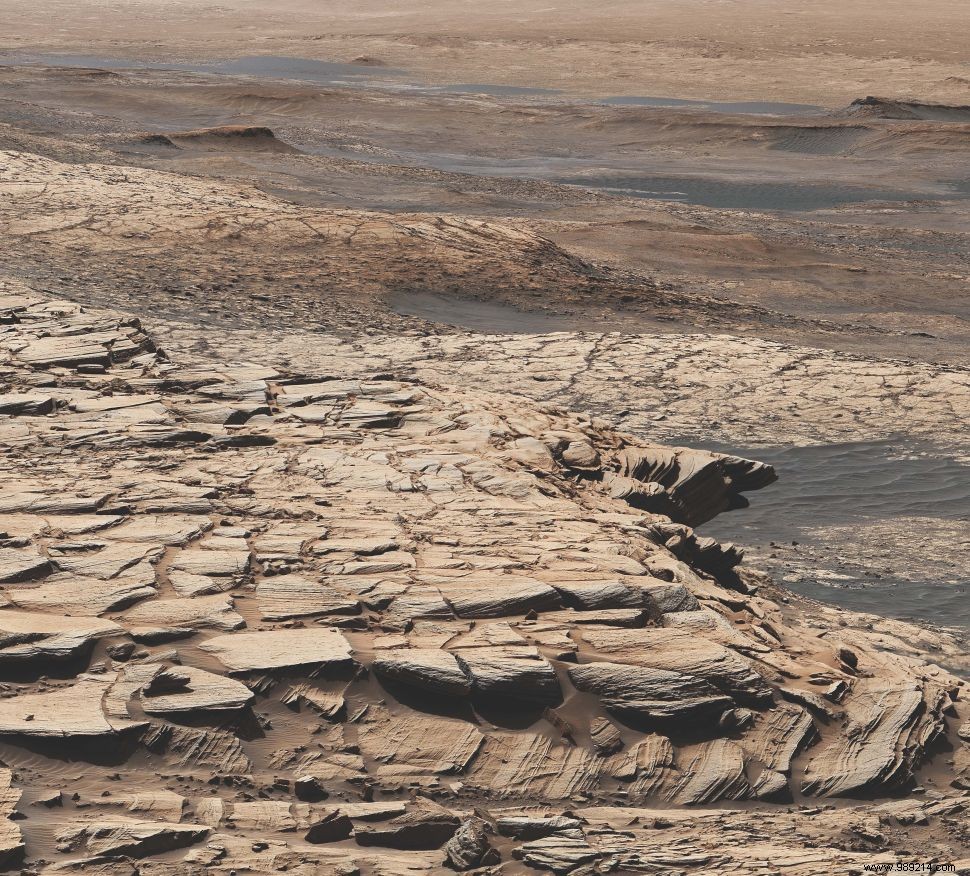By analyzing rock dust collected from Mars by the Curiosity rover in the Gale crater, scientists have identified particularly interesting organic compounds. One of the possible explanations for this new discovery would involve ancient microbes.
Curiosity has been evolving on Mars inside Gale Crater, about 154 kilometers wide, since August 2012. Its main mission was to determine if the area could have supported life microbial billions of years ago. Very quickly, the rover team considered the environment "potentially habitable". It is said to have formerly housed a system of lakes and streams that persisted for several million years .
As part of a new study published this Tuesday in the Proceedings of the National Academy of Sciences, a team reports the results of examination of two dozen samples of powdered rock collected by the rover from various locations between August 2012 and July 2021.
After collecting them, Curiosity fed these materials into its SAM instrument, which is able to identify and characterize organic matter, carbon-containing molecules that are the building blocks of life on Earth.
After analysis, the scientists discovered that nearly half of these samples were enriched in carbon 12 , whose atomic nucleus has six protons and six neutrons. These samples came from five different locations, all showing very old surfaces that have been preserved over eons (geological time).
This discovery is important, because on Earth, organisms preferentially use carbon 12 for their metabolic processes. We could therefore interpret the enrichment in this isotope in the samples taken as a biotic chemistry signal (relating to life). However, Mars is very different from our world and its carbon cycles are still largely misunderstood. It is therefore still too early to draw hasty conclusions.

Researchers offer three possible explanations for this intriguing finding. One involves methane-producing microbes . This methane would then have been converted into more complex organic molecules after interacting with the ultraviolet (UV) light that bathes the red planet. These larger organic materials would then fall to the ground before integrating the rocks sampled by Curiosity.
However, similar reactions involving UV light and non-biological carbon dioxide , the most abundant gas in the Martian atmosphere, could also have generated the same result. Finally, it is also possible that our system has drifted through a molecular cloud rich in carbon 12 billions of years ago.
"The three explanations match the data “Summarizes Christopher House of Pennsylvania State University. "We just need more data to confirm or rule them out . »
Finally, let's remember that Curiosity is not specifically equipped to formally identify a sign of life. Better data will likely be collected by its cousin Perseverance. The latter is indeed evolving inside another crater likely to have sheltered abundant water several billion years ago. Several dozen samples taken by the rover will also be brought back to Earth for analysis in the early 2030s.